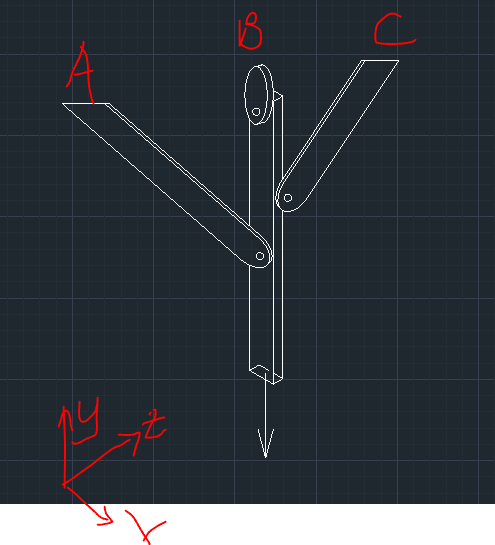Pororo
Civil/Environmental
- Mar 1, 2018
- 18
Here is the drawing for the structure. Basically, it concerns 3 dimensions,. The structure is supporting a weight indicated by the arrow pointing down. All of the 3 supports at the top are pin-supported (to my understanding. That support drawn at B is same for A and C). To my understanding: I have 3 reactions per support, Rx, Ry and Rz so a total of 9 reactions. Maz = 0, Mbz = 0, Mcx = 0, ΣFx =0, ΣFy = 0, ΣFz = 0. Am I on the right path in the analysis of this one? If so, since the indeterminacy is 3 degrees, what additional equations can I use to solve the indeterminacy? Thanks!


